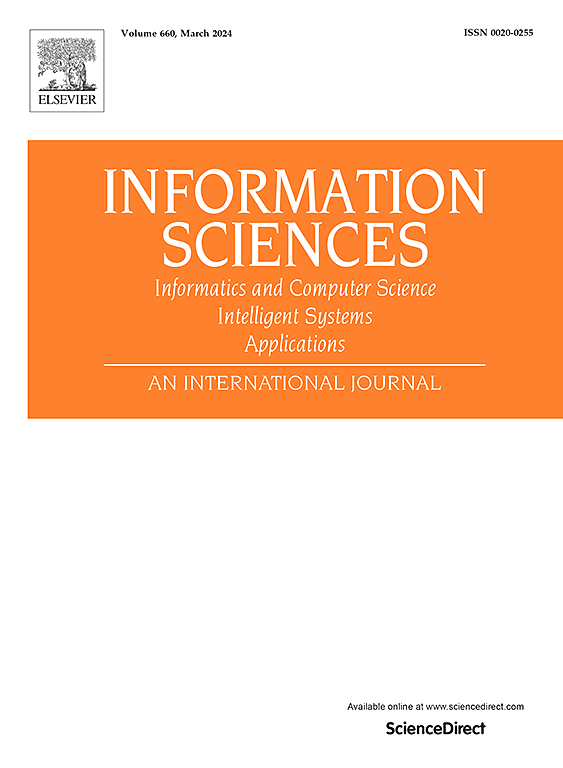Weighted dynamic network link prediction based on graph autoencoder
IF 6.8
1区 计算机科学
0 COMPUTER SCIENCE, INFORMATION SYSTEMS
引用次数: 0
Abstract
With the development of deep learning, Graph Autoencoders (GAE) within unsupervised learning frameworks have been widely applied to representation learning in dynamic networks. However, existing methods typically assume that the node set remains fixed across all time slices and ignore edge weight information, which limits the ability to capture network dynamics and distinguish the strength of node relationships. To address these issues, this paper proposes a weighted dynamic network link prediction framework based on GAE, called GAE_GGLA. This framework introduces an alignment module that can handle non-fixed node sets to adapt to dynamic network environments. Additionally, the edge weight matrix is used as a bias term in the graph attention network to calculate attention coefficients, guiding the learning of node features and enhancing their representational capacity. Furthermore, the GAE encoder employs graph convolution network (GCN) and long short-term memory (LSTM) networks to capture, respectively, structural features and temporal evolution. The alignment module connects different node sets through adjacent time slices, ensuring the continuity and consistency of network information. Finally, the GAE decoder reconstructs the adjacency matrix of the original graph to achieve link prediction. Experiments conducted on five different datasets demonstrate that the proposed method significantly outperforms state-of-the-art baselines.
基于图自编码器的加权动态网络链路预测
随着深度学习的发展,无监督学习框架下的图自编码器(GAE)已被广泛应用于动态网络中的表示学习。然而,现有方法通常假设节点集在所有时间片上保持固定,并且忽略了边缘权重信息,这限制了捕获网络动态和区分节点关系强度的能力。为了解决这些问题,本文提出了一种基于GAE的加权动态网络链路预测框架——GAE_GGLA。该框架引入了一个对齐模块,该模块可以处理非固定节点集,以适应动态的网络环境。此外,在图注意网络中,利用边权矩阵作为偏向项计算注意系数,指导节点特征的学习,增强节点特征的表示能力。此外,GAE编码器采用图卷积网络(GCN)和长短期记忆网络(LSTM)分别捕捉结构特征和时间演化。对齐模块通过相邻的时间片连接不同的节点集,保证了网络信息的连续性和一致性。最后,GAE解码器对原始图的邻接矩阵进行重构,实现链路预测。在五个不同的数据集上进行的实验表明,所提出的方法明显优于最先进的基线。
本文章由计算机程序翻译,如有差异,请以英文原文为准。
求助全文
约1分钟内获得全文
求助全文
来源期刊

Information Sciences
工程技术-计算机:信息系统
CiteScore
14.00
自引率
17.30%
发文量
1322
审稿时长
10.4 months
期刊介绍:
Informatics and Computer Science Intelligent Systems Applications is an esteemed international journal that focuses on publishing original and creative research findings in the field of information sciences. We also feature a limited number of timely tutorial and surveying contributions.
Our journal aims to cater to a diverse audience, including researchers, developers, managers, strategic planners, graduate students, and anyone interested in staying up-to-date with cutting-edge research in information science, knowledge engineering, and intelligent systems. While readers are expected to share a common interest in information science, they come from varying backgrounds such as engineering, mathematics, statistics, physics, computer science, cell biology, molecular biology, management science, cognitive science, neurobiology, behavioral sciences, and biochemistry.
 求助内容:
求助内容: 应助结果提醒方式:
应助结果提醒方式:


